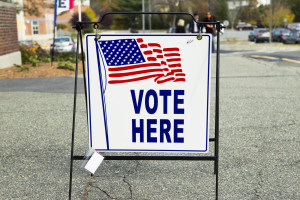The high profile rape trial of a former prep school student ended without a rape conviction despite DNA evidence presented last week by forensic expert witnesses called by prosecutors to connect the defendant to his alleged crime. While jurors were unwilling to convict the defendant of rape, they found the DNA to be enough to issue a guilty verdict in the lesser charge of having consensual sex with a minor.
Prosecution Presents Evidence in Prep School Rape Case
Prosecutors in New Hampshire rested their case against Owen Labrie, a graduate of the state’s elite prep school St. Paul’s who was accused of raping a 15-year-old female classmate prior to his graduation. During the prosecution’s case, Concord Police Detective Julie Curtin, who investigated the case, took the stand to tell the jury that Labrie had admitted to consensual touching and kissing, and told police that he had prepared for intercourse by putting on a condom. However, Labrie denied he had sex with, or raped, the alleged victim.
Several witnesses present at the scene of the alleged assault testified for the prosecution, but the most compelling evidence of Labrie’s involvement with the teenager came from a forensic expert witness who connected the defendant’s DNA to the victim’s underwear.
DNA Expert Witnesses Connect Defendant to Alleged Victim
In wrapping up its case against Labrie, the prosecution called two criminalists from the New Hampshire State Police Laboratory to serve as forensic expert witnesses. Kevin G. McMahon testified first and told jurors that in his expert opinion, DNA testing found on the alleged victim’s underwear suggested a “strong indication of semen” that was connected to the defendant. McMahon’s expert testimony was supported by criminalist Kate Swango who performed tests on the girl’s underwear.
According to Swango, her testing demonstrated that Labrie’s DNA was present on the underwear “to a reasonable degree of scientific certainty.” The prosecution expert witnesses combined to argue that Labrie’s DNA sample, which was likely semen, was present on the young girl’s undergarments. According to prosecutors this evidence, combined with the girl’s testimony that she did not consent to the sexual encounter, demonstrated a case for rape.
DNA Expert Witnesses Fail to Secure Rape Conviction
Defense attorneys for Labrie took both of the prosecution expert witnesses to task for concluding that the DNA found on the underpants was, in fact, semen and not some other liquid such as saliva or sweat. Under testimony Swango, after consulting her and McMahon’s notes, admitted that the expert witnesses had not determined the exact source of the defendant’s DNA. Calling the expert testimony into question, attorneys for Labrie argued to the jury that the young man had engaged in some consensual sexual activity, but had not had intercourse with the girl or acted against her stated will.
After all the evidence was presented, jurors issued a compromise verdict that declined to find Labrie guilty of rape, but did determine that he did engage in sexual activity with a girl who was below the age of consent. Given the result of the trial, it appears that the jurors placed more emphasis on the uncertainty of the situation as told by the victim and defendant than on the forensic evidence discussed by the prosecution’s expert witnesses.













